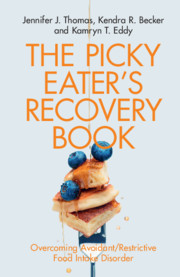94 results
Evaluating CBT for health anxiety and obsessive compulsive disorder adapted for online delivery in the context of COVID-19
-
- Journal:
- Behavioural and Cognitive Psychotherapy , First View
- Published online by Cambridge University Press:
- 11 March 2025, pp. 1-13
-
- Article
-
- You have access
- Open access
- HTML
- Export citation
4 - A Liberal Revolution in Government
- from II - 1819–85: Becoming Liberal and Global
-
- Book:
- Modern Britain, 1750 to the Present
- Published online:
- 14 January 2025
- Print publication:
- 30 January 2025, pp 113-147
-
- Chapter
- Export citation
6 - Uplifting the Community
-
- Book:
- Respectable Muslims
- Published online:
- 18 December 2024
- Print publication:
- 19 December 2024, pp 148-179
-
- Chapter
- Export citation

Belligerent Reprisals from Enforcement to Reciprocity
- A New Theory of Retaliation in Conflict
-
- Published online:
- 12 December 2024
- Print publication:
- 19 December 2024
Assessing local service providers’ needs for scaling up MHPSS interventions for Ukrainian refugees: Insights from Poland, Slovakia, and Romania
-
- Journal:
- Cambridge Prisms: Global Mental Health / Volume 11 / 2024
- Published online by Cambridge University Press:
- 06 December 2024, e119
-
- Article
-
- You have access
- Open access
- HTML
- Export citation
10 - Delivering Mental Health Services
-
- Book:
- Introduction to Clinical Psychology
- Published online:
- 31 October 2024
- Print publication:
- 31 October 2024, pp 249-268
-
- Chapter
- Export citation
Cognitive behavioral self-help interventions for individuals experiencing psychosis: a systematic review
-
- Journal:
- Psychological Medicine / Volume 54 / Issue 12 / September 2024
- Published online by Cambridge University Press:
- 09 September 2024, pp. 3222-3232
-
- Article
-
- You have access
- Open access
- HTML
- Export citation
Introduction
-
- Book:
- Adultish
- Published online:
- 10 October 2024
- Print publication:
- 01 August 2024, pp 3-6
-
- Chapter
-
- You have access
- Export citation
Effectiveness of a WHO self-help psychological intervention to alleviate stress among healthcare workers in the context of COVID-19 in China: a randomised controlled trial
-
- Journal:
- Epidemiology and Psychiatric Sciences / Volume 33 / 2024
- Published online by Cambridge University Press:
- 07 March 2024, e11
-
- Article
-
- You have access
- Open access
- HTML
- Export citation
NON-FORCIBLE MEASURES AND THE LAW OF SELF-DEFENCE
-
- Journal:
- International & Comparative Law Quarterly / Volume 72 / Issue 1 / January 2023
- Published online by Cambridge University Press:
- 02 December 2022, pp. 1-33
- Print publication:
- January 2023
-
- Article
- Export citation
“Might relapse today” - The categorization of discussions in the r/benzorecovery subreddit
-
- Journal:
- European Psychiatry / Volume 65 / Issue S1 / June 2022
- Published online by Cambridge University Press:
- 01 September 2022, pp. S828-S829
-
- Article
-
- You have access
- Open access
- Export citation
3 - Managing Poverty and National Development
-
- Book:
- Charity in Saudi Arabia
- Published online:
- 14 July 2022
- Print publication:
- 28 July 2022, pp 121-196
-
- Chapter
- Export citation
4 - Neutrality and the Use of Force
-
- Book:
- Non-Participation in Armed Conflict
- Published online:
- 24 February 2022
- Print publication:
- 03 March 2022, pp 144-174
-
- Chapter
- Export citation
6 - Neutrality and Cyber Warfare
-
- Book:
- Non-Participation in Armed Conflict
- Published online:
- 24 February 2022
- Print publication:
- 03 March 2022, pp 201-219
-
- Chapter
- Export citation
6 - Mutual Help Approaches and Mechanisms of Change
- from Part I - Micro Level
-
-
- Book:
- Dynamic Pathways to Recovery from Alcohol Use Disorder
- Published online:
- 23 December 2021
- Print publication:
- 06 January 2022, pp 95-113
-
- Chapter
- Export citation

The Picky Eater's Recovery Book
- Overcoming Avoidant/Restrictive Food Intake Disorder
-
- Published online:
- 03 September 2021
- Print publication:
- 12 August 2021
1 - What Is ARFID?
- from Section I - All About ARFID
-
- Book:
- The Picky Eater's Recovery Book
- Published online:
- 03 September 2021
- Print publication:
- 12 August 2021, pp 3-21
-
- Chapter
- Export citation
Patient experience of Guided self-help CBT intervention for VoicEs (GiVE) delivered within a pilot randomized controlled trial
-
- Journal:
- The Cognitive Behaviour Therapist / Volume 13 / 2020
- Published online by Cambridge University Press:
- 06 October 2020, e40
-
- Article
- Export citation
Self-administered EMDR therapy: potential solution for expanding the availability of psychotherapy for PTSD or unregulated recipe for disaster?
-
- Journal:
- BJPsych Open / Volume 6 / Issue 6 / November 2020
- Published online by Cambridge University Press:
- 02 October 2020, e115
-
- Article
-
- You have access
- Open access
- HTML
- Export citation
Supported cognitive-behavioural therapy self-help versus treatment-as-usual for depressed informal caregivers of stroke survivors (CEDArS): feasibility randomised controlled trial
- Part of
-
- Journal:
- The Cognitive Behaviour Therapist / Volume 13 / 2020
- Published online by Cambridge University Press:
- 14 July 2020, e23
-
- Article
-
- You have access
- Open access
- HTML
- Export citation


